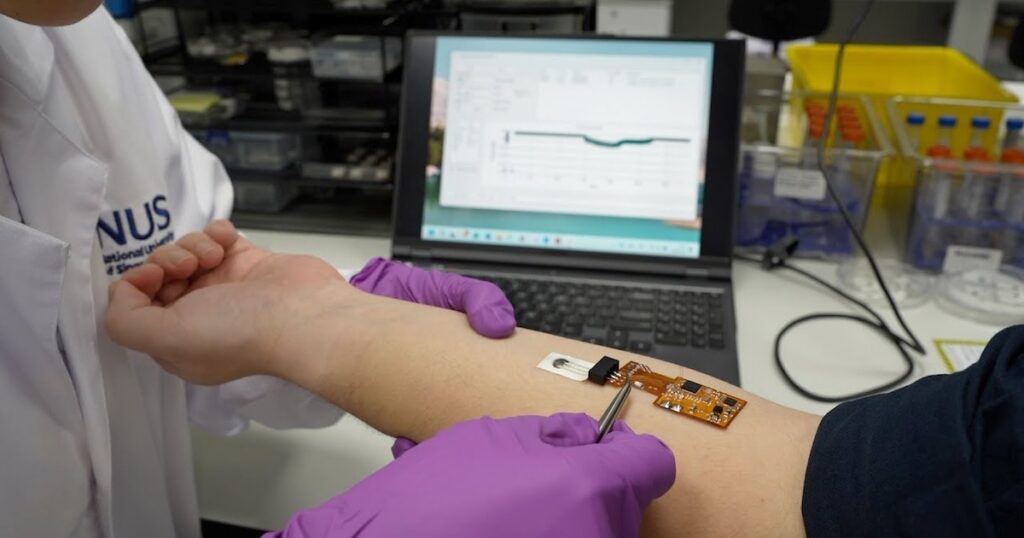
A novel wearable sensor developed in Singapore doesn’t depend on widespread biofluids reminiscent of blood and sweat to repeatedly monitor continual well being situations.
As an alternative, it makes use of what known as “solid-state epidermal biomarkers,” together with ldl cholesterol and lactate, discovered on the pores and skin. These biomarkers, in line with researchers from the Nationwide College of Singapore and the Company for Science, Know-how and Analysis, could also be related to cardiovascular illnesses and diabetes.
Particulars about this invention, touted to be a primary of its sort on the planet, have been revealed within the journal Nature Supplies.
HOW IT WORKS
The pores and skin biomarkers dissolve into the hydrogel layer of the sensor and bear electrochemical reactions. The ensuing physiological information is then transmitted to an exterior interface via the circuit board.
“The ionic conductive hydrogel layer that solvates the biomarkers and the electronically conductive hydrogel layer facilitates electron transport. This bilayer allows the sequential solvation, diffusion, and electrochemical response of the biomarkers,” defined Liu Yuxin, analysis co-lead and assistant professor of the NUS Division of Biomedical Engineering.
“One other spotlight is the sensor’s sensitivity with biomarkers being detected exactly even in low quantities,” he added.
The hydrogel-based sensor, produced utilizing a low-cost manufacturing course of referred to as screening printing, is designed to be stretchable to adapt to the pores and skin’s elasticity. Its design additionally minimises disruptions attributable to actions, making it perfect for steady well being monitoring.
Based on the researchers, the sensor may be an alternative choice to blood checks for monitoring diabetes, hyperlipoproteinemia, and cardiovascular situations. Specific potential purposes of this sensor embrace glucose tolerance testing and every day coronary heart well being monitoring.
The analysis workforce is now working to reinforce the sensor’s working time and sensitivity and broaden its applicability by including extra solid-state analytes. They’ve additionally tapped hospitals for additional medical validation of the machine, significantly for steady glucose monitoring.
THE LARGER TREND
An analogous stretchable sensor was developed in 2021 by Samsung researchers. Built-in with a PPG sensor, the pores and skin patch can monitor and show coronary heart charges in close to real-time.
In Hong Kong, a wrist-worn bio-sensor – claimed to be the smallest on the planet – can decide up weak electrochemical indicators to repeatedly monitor blood sugar ranges and antibody focus within the blood.
One other analysis workforce from NUS and A*STAR final yr launched a skinny, biocompatible sensor patch that makes use of AI to detect a number of wound biomarkers and monitor wound therapeutic standing inside quarter-hour.
In Australia, a wearable patch worn on the neck can monitor numerous biometrics, together with respiration and coronary heart charges, by monitoring a single amplitude sign.


